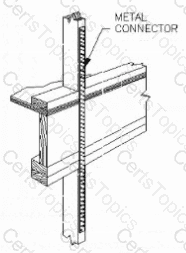(Interior climate of the space, Exterior climate of the building location, Thermal resistance properties of the materials, Orientation of the building, Compatibility of the materials with adjacent materials)
Comprehensive Detailed Explanation with all NCARB ARE 5.0 Project Development and Documentation (PDD) Study Guide References:
Selecting thermal insulation and moisture control assemblies requires a holistic approach considering multiple factors:
A. Interior climate of the space: Critical to determine required insulation levels and vapor barrier placement.
B. Exterior climate: Determines heating or cooling loads, moisture conditions, freeze-thaw cycles.
D. Thermal resistance properties: R-value of materials is fundamental in controlling heat flow.
E. Orientation of the building: Affects solar heat gain, exposure to wind-driven rain, and thus moisture control strategy.
F. Compatibility of materials: Important to avoid chemical or physical degradation, ensure proper adhesion, and maintain performance over time.
C. Type of HVAC system is important for overall building performance but not a primary factor in selecting insulation and moisture control assemblies themselves, which are more dependent on physical and climatic factors.
Supporting References:
NCARB ARE 5.0 Review Manual, Environmental Systems and Materials chapters
ASHRAE Fundamentals Handbook (thermal insulation design)
Building Science Corporation’s guides on moisture control and thermal envelopes
